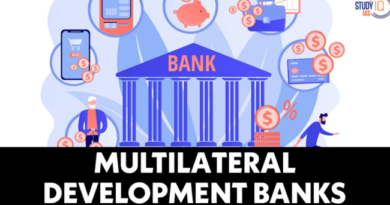ESG Risks Are Real—and Risk Managers Are Now on the Frontlines
Until recently, Environmental, Social, and Governance (ESG) concerns were seen as a job for sustainability officers, PR teams, or corporate social responsibility departments. Not anymore.
Today, ESG risks are business risks. And risk managers are stepping in to lead the charge—not just to protect reputation, but to ensure long-term survival and success.
Let’s dig into what ESG risks are, why they’ve become mission-critical, and what you can do as a risk professional to stay ahead.
First Things First: What Counts as an ESG Risk?
Let’s break it down:
- Environmental: Think climate risks, energy use, waste, emissions, or dependence on non-renewable resources.
- Social: Covers employee treatment, labor practices, human rights, workplace diversity, customer data privacy, and community engagement.
- Governance: Includes how a company is led—ethical behavior, board oversight, transparency, executive pay, and compliance.
All of these can trigger financial losses, regulatory trouble, or public backlash if mismanaged.
Why ESG Risks Are Now Impossible to Ignore
Customers Demand It
Consumers want brands that reflect their values. If you mistreat workers, pollute a river, or hide your executive pay, don’t be surprised if customers take their money elsewhere.
Investors Require It
Whether it’s BlackRock or your neighborhood credit union, investors are asking for ESG metrics before funding businesses. Many have ESG-linked investment mandates.
Regulations Are Getting Tougher
From the EU to the SEC, regulators are tightening ESG reporting requirements. If your business operates internationally, you’re already in scope.
ESG Failures = Crisis Mode
Just one ESG scandal—like a supply chain labor abuse claim—can crash your share price, lead to lawsuits, or get you banned from government contracts.
Examples That Hit Hard
- Uber (Social/Governance): Public trust dropped after allegations of sexual harassment and toxic culture surfaced.
- Amazon (Environmental/Social): Faced criticism over carbon footprint and warehouse worker treatment.
- Fast fashion brands: Regularly hit with backlash over environmental waste and poor labor conditions in factories.
These companies aren’t small players—yet even they struggle when ESG risk is neglected.
So, What Can Risk Managers Actually Do?
Here are five simple but powerful steps to bring ESG into your risk strategy:
1. Make ESG a Standing Agenda Item
If your risk meetings don’t include ESG, that needs to change.
- Add “ESG impact” to risk registers
- Score ESG risks like you would cyber or credit risks
- Regularly update leadership on emerging ESG threats
2. Map Out Where ESG Risk Lives in Your Company
- Climate change may affect your supply chain
- Employee dissatisfaction can lead to walkouts
- Weak governance can cause regulatory breaches
Knowing where the cracks are helps you act faster.
3. Connect With Other Departments
You can’t own ESG risk alone—and you don’t need to.
- Talk to HR, Legal, IT, and Procurement
- Collaborate on policies like DEI initiatives, privacy protocols, and supplier audits
- Bring their insights into your risk assessments
4. Choose an ESG Framework and Get Tracking
Not sure what to measure? Use established standards like:
- GRI: Great for environmental and social tracking
- SASB: Industry-specific metrics
- TCFD: Focuses on climate risk and disclosures
You don’t need to be perfect—just consistent and transparent.
5. Be Ready to Respond to ESG Incidents
Plan ahead. What will you do if:
- A whistleblower exposes unethical leadership behavior?
- A news outlet covers poor factory conditions linked to your suppliers?
- A shareholder group demands more climate action?
Have a crisis communication plan, legal counsel briefed, and recovery strategy in place.
Bonus Tip: Think Long-Term, Not Just Audit-Term
Managing ESG risks isn’t just about ticking boxes. It’s about building a business that lasts.
- ESG-conscious companies attract better talent
- They innovate faster
- They earn more trust—and keep it longer
Your job as a risk leader? Help guide your company into a future that’s both profitable and principled.
Final Thoughts
ESG risks are here, and they’re growing. Risk managers have a critical role to play—not just to mitigate risk, but to lead cultural change across the business.
So don’t wait. Bring ESG into your risk lens now, and help future-proof your organization—before someone else forces the change.
Explore Best Online Courses to Learn Risk Management
If you’re new to risk management or looking to deepen your expertise, there’s no better time to start than now. Learning from industry experts can help you build a strong foundation and gain certifications that set you apart in the job market.
At www.smartonlinecourse.com, in collaboration with the Risk Management Association of India (www.rmaindia.org), you can explore a range of self-paced, affordable online courses designed for both beginners and professionals. These courses are tailored to real-world needs, taught by experts, and designed for flexible learning.
👉 Visit www.smartonlinecourse.com to explore more!
📧 Email: [email protected]
Or WhatsApp us at: 8232083010/9883398055




